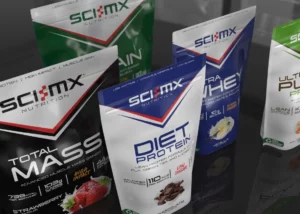In the dynamic world of Consumer Packaged Goods (CPG), the role of packaging transcends mere product containment. It’s a pivotal element in sustainability, cost efficiency, consumer appeal, and much more. As we step into an era where every aspect of packaging is scrutinized, reevaluating your flexible packaging film structure becomes not just beneficial, but essential for maximum impact. Let’s delve into the key points that underscore this necessity.
Sustainability and Environmental Impact
The increasing awareness of environmental issues places a significant responsibility on CPG companies. The shift towards sustainable materials is not just a trend but a necessity. By redesigning packaging to incorporate recyclable or compostable films, companies can drastically reduce their environmental footprint. This move not only aligns with global sustainability goals but also resonates with the eco-conscious consumer base.
Cost Efficiency
The landscape of packaging technology is ever-evolving, often unveiling more cost-effective solutions. Companies might discover new materials that are not only cheaper but also require less quantity to achieve the same strength and durability. This evolution in packaging materials can lead to substantial reductions in overall costs, a crucial factor in the highly competitive CPG market.
Consumer Preferences and Trends
Consumer preferences are a moving target, with rapid shifts that can make or break a product’s success. Packaging that aligns with current market trends, such as minimalistic designs or clear visibility of the product, can significantly enhance consumer appeal. Staying attuned to these trends is vital for maintaining relevance and appeal in the marketplace.
Regulatory Compliance
The regulatory landscape regarding packaging materials, labeling, and waste disposal is constantly changing. Companies must regularly reevaluate their packaging films to ensure compliance with these evolving regulations, thereby avoiding potential legal complications and fines.
Product Protection and Shelf Life
Innovations in packaging materials can offer enhanced protection against environmental factors like moisture, air, or light. This advancement not only extends the product’s shelf life but also maintains its quality, which is paramount in consumer satisfaction and brand reputation.
Brand Image and Marketing
Packaging is a critical component of a brand’s image and marketing strategy. A change in packaging can breathe new life into a brand, making it more relevant and attractive in today’s competitive market. It’s an opportunity to communicate brand values, such as sustainability or innovation, directly to the consumer.
Operational Efficiency
The adoption of new packaging materials or structures can significantly improve a company’s manufacturing processes. Enhanced operational efficiency and productivity can be achieved when packaging materials are more compatible with existing machinery and workflows.
Supply Chain and Logistics
Packaging changes can have a profound impact on the logistics of a product, affecting how it is stored and transported. More efficient packaging can lead to reduced shipping costs and improved storage efficiency, optimizing the overall supply chain.
Safety and Compliance
New packaging designs and materials can offer improved safety features, such as tamper-evidence or child-resistant mechanisms. These features are particularly important for products that require an additional layer of security or safety.
Technological Advancements
The realm of packaging is not immune to technological advancements. The development of connected packaging, embedded with technology for tracking or consumer interaction, presents a competitive edge. This innovation can transform packaging from a passive container to an interactive element of the consumer experience.
Reevaluating your flexible packaging film structure is not just about keeping up with the times; it’s about leveraging opportunities for improvement in every facet of your product’s journey—from production to the hands of the consumer. It’s a strategic move that can yield significant benefits in sustainability, cost savings, consumer appeal, and much more. In the ever-evolving landscape of CPG, staying ahead means constantly rethinking and innovating your packaging strategy for maximum impact.





